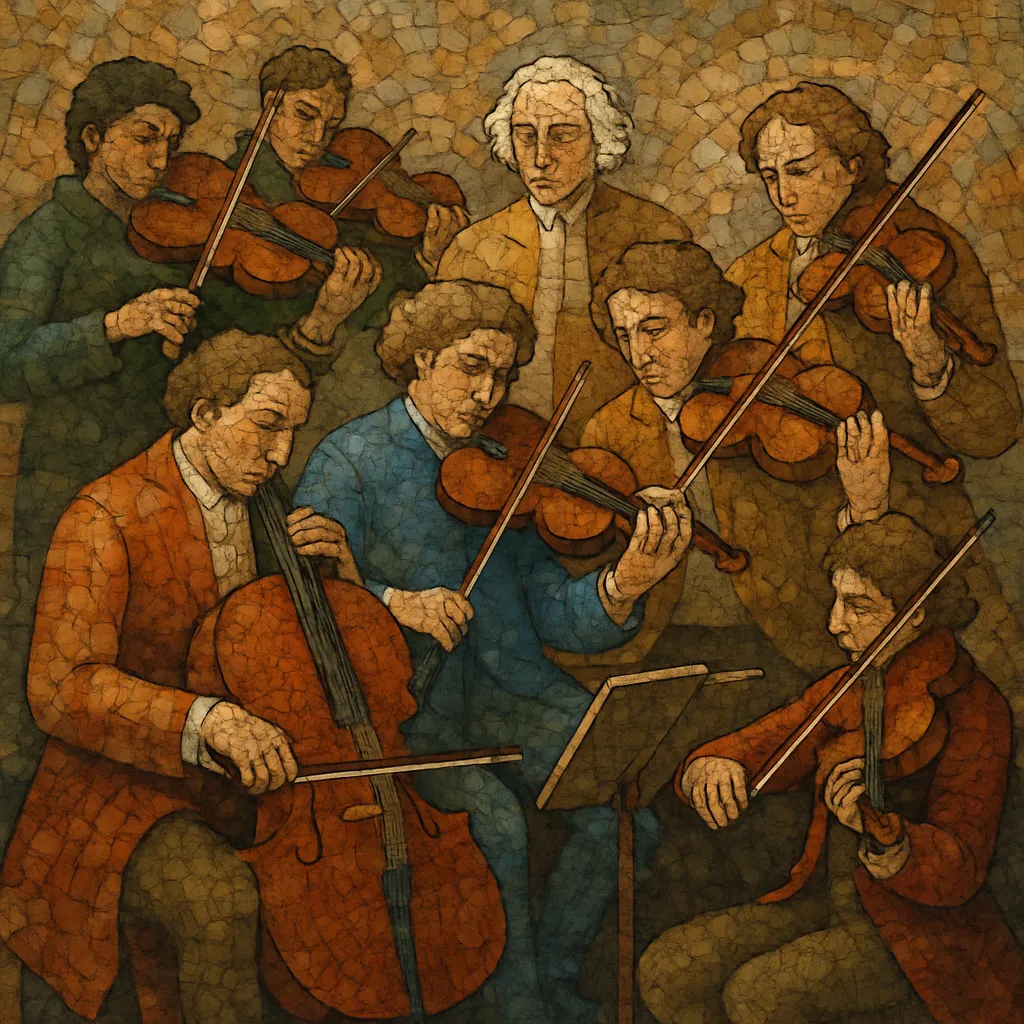A concerto grosso is a Baroque-era orchestral form built on contrasts between a small group of soloists (the concertino) and the full ensemble (the ripieno or tutti).
It typically features strings with basso continuo, terraced dynamics, antiphonal dialogue, and clear tonal harmony. Two principal subtypes emerged: the church-oriented sonata da chiesa (often in a four-movement slow–fast–slow–fast plan) and the dance-inflected sonata da camera (suite-like movements).
The genre highlights thematic exchange, sequences, and imitation, with the concertino—often two violins and cello—embroidered against broader tutti refrains. Corelli’s models codified its syntax, and Handel’s sets represent its late-Baroque culmination.
The concerto grosso crystallized in Italy in the 1680s, especially in Rome. While antecedents can be traced to the Renaissance canzona and the concertato principle in sacred music, Arcangelo Corelli codified the idiom in works that balanced a small concertino (two violins and cello) against ripieno strings with continuo. Alessandro Stradella is often cited as a forerunner, and the Bolognese school (notably Giuseppe Torelli) advanced the form’s ceremonial brilliance and trumpet writing.
By the early 1700s, the concerto grosso had become an international Baroque emblem. Corelli’s posthumously published Op. 6 (1714) became a pan-European model. Georg Muffat synthesized Italian style with French influences, documenting performance practice. Francesco Geminiani and Pietro Locatelli expanded virtuosic idioms and expressive range. In England, George Frideric Handel’s Op. 3 and Op. 6 sets epitomized the form’s late-Baroque grandeur, while Charles Avison crafted concerti grossi based on Scarlatti keyboard sonatas.
As the 18th century progressed, the rising solo concerto (Vivaldi’s forte) and the emergent symphony began to supplant the concerto grosso. Its rhetorical contrast survived, however, in concerto and symphonic procedures of the Classical era.
Neoclassical composers revived the concerto grosso principle—Stravinsky (Dumbarton Oaks), Bloch, Vaughan Williams, and Tippett adapted the concertino–ripieno dialogue to modern tonalities and ensembles. Historically informed performance has restored Baroque articulation, tempi, and continuo practice, keeping the genre vivid in contemporary concert life.


